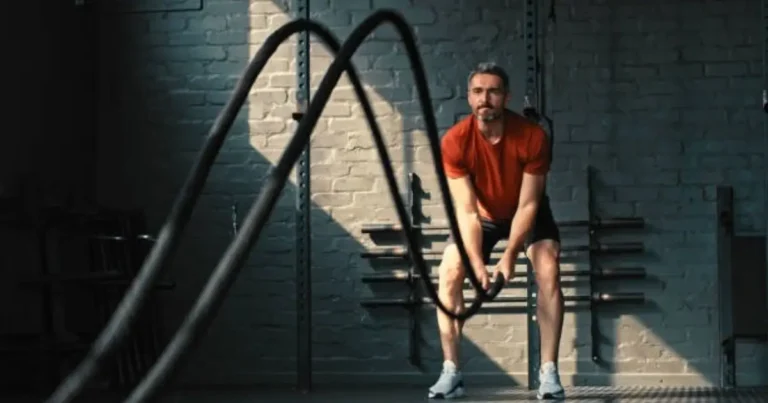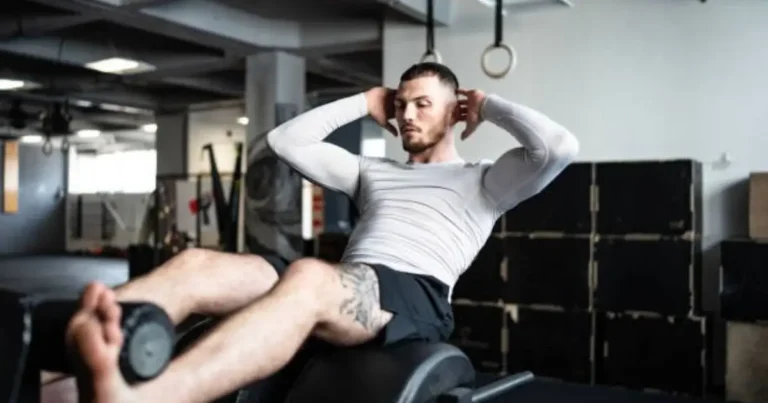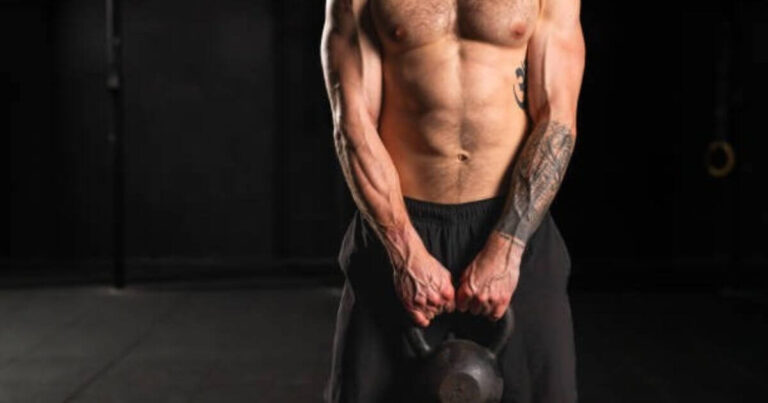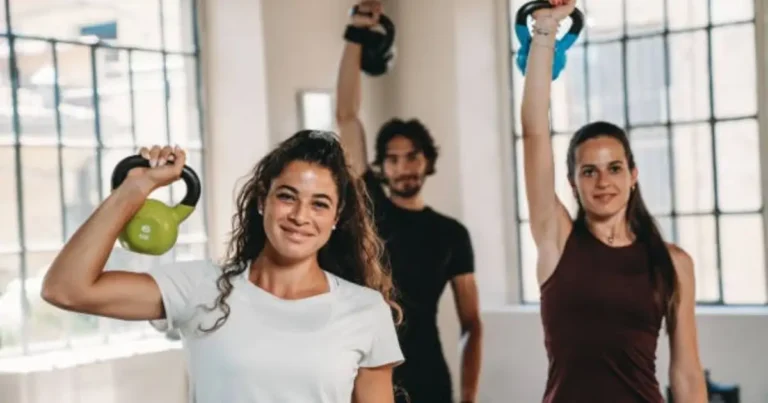The Ultimate Calisthenics Core Workout: Build Functional Strength & Stability
Move beyond chasing six-pack abs—your core is the powerhouse of movement, stability, and resilience. A smart calisthenics core workout trains every muscle from every angle: abs, obliques, transverse abdominis (TVA), lower back, glutes, diaphragm, and pelvic floor. This 360° approach builds true, integrated strength and lasting stability.
In this guide, you’ll discover:
- Functional anatomy of your core
- Key principles: form, breathing, progression
- Level-based routines (beginner ➔ intermediate ➔ advanced)
- Categorized exercise library by function
- Warm-up, cool-down & mobility
- Common mistakes and how to fix them
Ready to upgrade your core? Jump to your level or read on for the full framework.
Table of Contents
Rethinking Core Training: Function Over Endless Crunches

Your core does more than flex your spine—its primary roles are:
| Function | Example Exercise | Purpose |
|---|---|---|
| Anti-Extension | Front Plank | Prevent lower-back arching |
| Anti-Rotation | Pallof Press (isometric) | Resist twisting forces |
| Anti-Lateral Flexion | Side Plank | Prevent side-bending |
| Hip/Spinal Flexion | Hanging Knee Raises | Bring knees toward chest |
| Force Transfer | Dead Bug | Connect upper & lower body power |
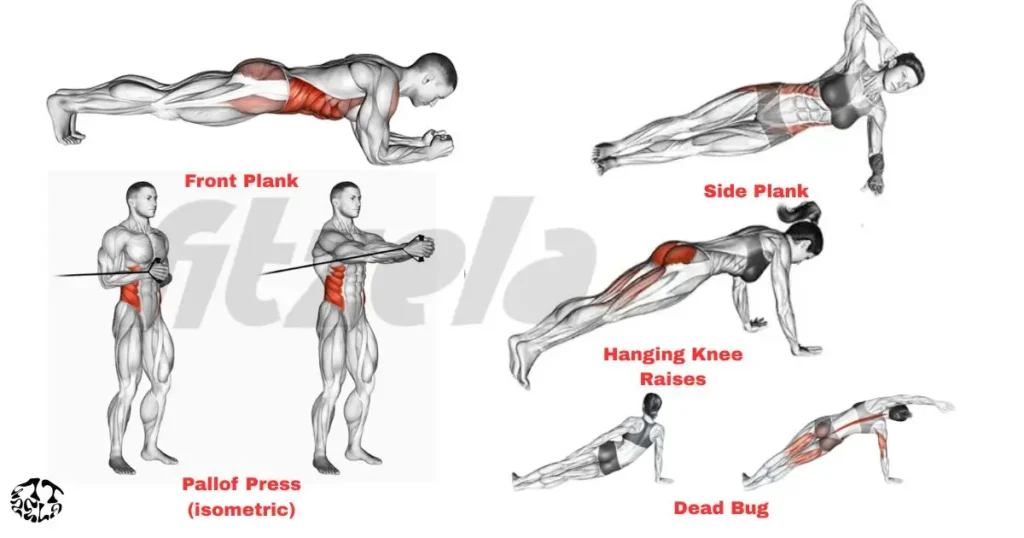
Understanding these roles ensures you select the right drills for stability and strength—far beyond endless crunches.
Core Training Essentials: Form, Breathing & Progression
Master Core Engagement (Bracing)
Learn to brace by tightening your midsection as if preparing for a light punch—this locks your spine in neutral without sucking in.
The Power of Diaphragmatic Breathing
Inhale to expand your belly, exhale forcefully on effort. Coordinate breath with each rep for stability and tension.
Quality Over Quantity
Perform slow, controlled reps; avoid momentum. Feel every inch of movement through the abs and back.
Progressive Overload for Core
Challenge yourself by:
- Increasing hold time or rep counts
- Slowing tempo (3–5 second negatives)
- Lengthening lever (e.g., extend one leg)
- Adding instability (use sliders or a stability ball)
- Introducing light weight (e.g., holding a plate)
Find Your Starting Point: Core Strength Assessment
Test your baseline:
- Front Plank: Hold with perfect form (beginner <30s; intermediate 30–60s; advanced >60s)
- Side Plank: Same benchmarks per side
- Dead Bug: Slow, controlled 8–10 reps per side
- Bird Dog: Hold each rep for 2–3 seconds
Jump to the routine matching your level.
Beginner Calisthenics Core Workout
Goal: Learn bracing, engage deep core, build stability.
Frequency: 2–3x/week or within full-body workouts.
| Exercise | Sets | Reps/Time | Rest |
| Plank | 3 | 20–30 sec | 30–45s |
| Side Plank | 2/side | 15–20 sec | 30–45s |
| Bird Dog | 3 | 8–10 each | 30s |
| Dead Bug | 3 | 8–10 each | 30s |
| Glute Bridge | 3 | 12–15 | 30–45s |
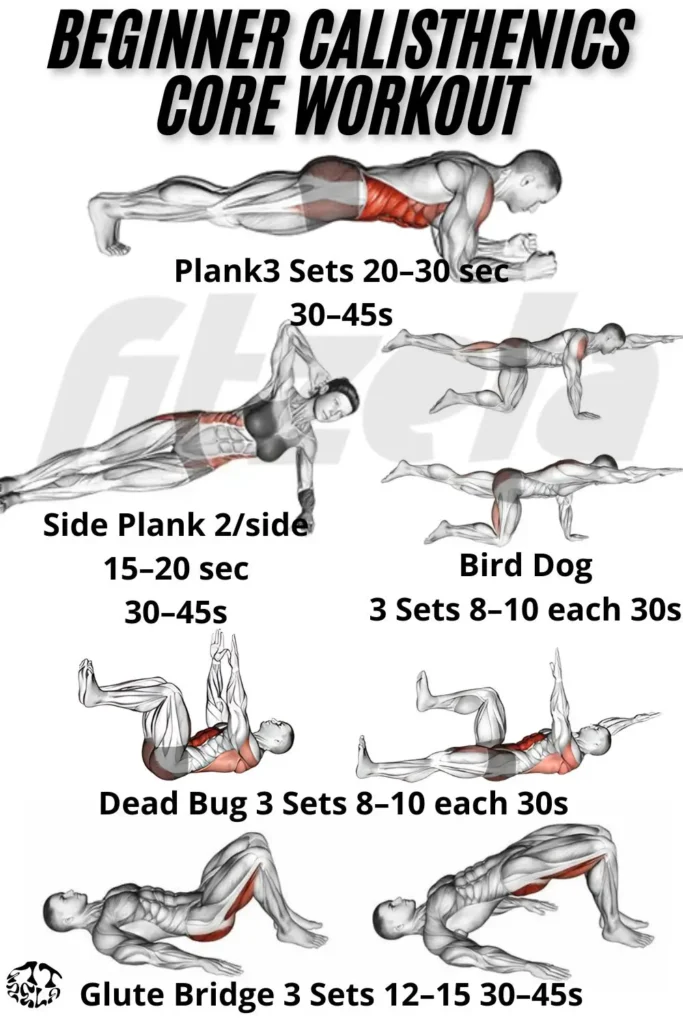
Progression: Increase hold times or reps; shift from knee to toe plank.
Intermediate Calisthenics Core Workout
Goal: Boost endurance, add dynamic anti-rotation and flexion challenges.
Frequency: 2–3x/week as standalone or split.
| Exercise | Sets | Reps/Time | Rest |
| Hollow Body Hold/Rocks | 3 | 20–30 sec | 30s |
| Side Plank Dips | 3/side | 10–12 | 30s |
| Hanging Knee Raises | 3 | 8–10 | 45s |
| Russian Twists | 3 | 12–16 each | 30s |
| Long Lever Plank (elbows on bench) | 2 | 20–30s | 30s |
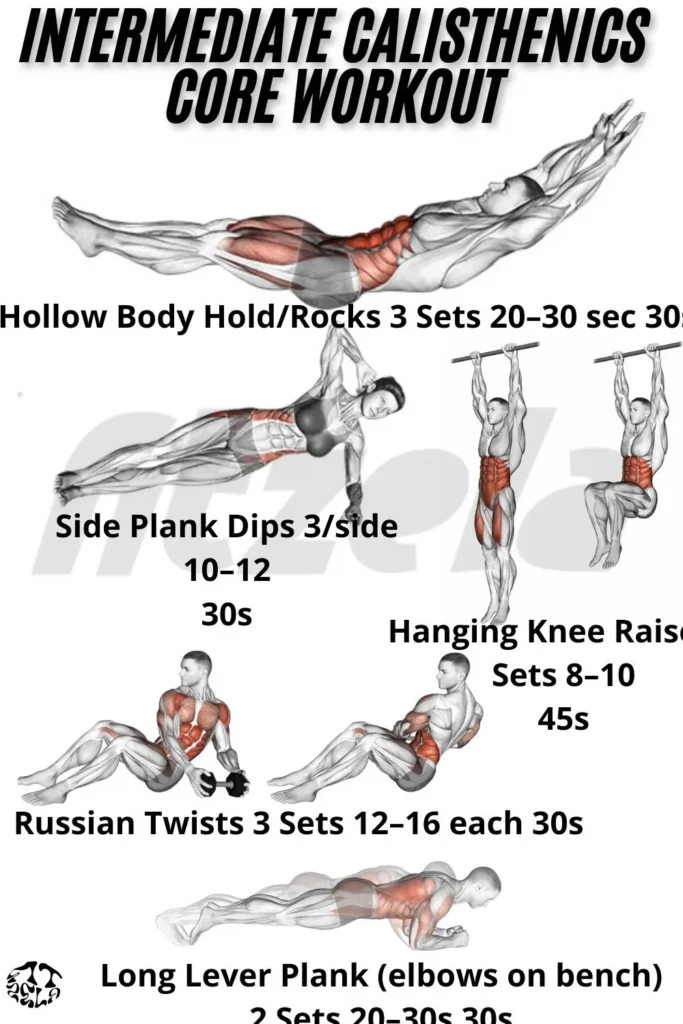
Progression: Move to hanging leg raises, longer hollow holds, plank jacks for instability.
Advanced Calisthenics Core Workout
Goal: Achieve elite-core control, anti-extension, rotation, and dynamic skill strength.
Frequency: 1–2x/week as focused session or finisher.
| Exercise | Sets | Reps/Time | Rest |
| Dragon Flag Negatives | 3 | 4–6 | 60–90s |
| Front Lever Tucks | 3 | 5–8 sec hold | 60–90s |
| Hanging Leg Raises | 3 | 10–12 | 45s |
| Ab Wheel Rollouts | 3 | 8–10 | 45–60s |
| Windshield Wipers | 3 | 6–8 each | 60s |
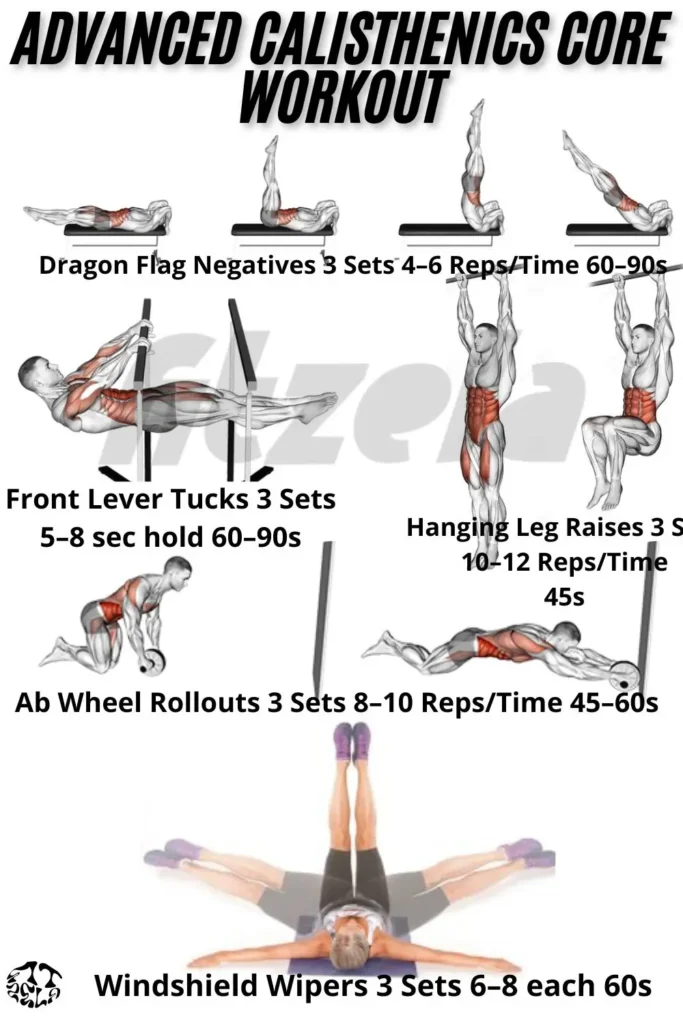
Programming: Alternate static holds and dynamic reps. Use these as skill work integrated with full workouts.
The Ultimate Calisthenics Core Exercise Library
Organized by function:
Anti-Extension
- Plank Variations (front, RKC, long lever)
- Ab Wheel Rollout
- Hollow Body
Anti-Rotation
- Pallof Press (band or cable)
- Side Plank with Reach
Anti-Lateral Flexion
- Side Plank
- Suitcase Carry (hold weight at side)
Hip/Spinal Flexion
- Hanging Knee/Leg Raises
- V-Ups
Force Transfer
- Dead Bug
- Bird Dog
Each entry includes:
- Step-by-step cues
- Common errors & fixes
- Regression & progression options
Abs Are Made in the Kitchen (AND the Gym)
Visible abs require low body fat—achieved primarily through diet. Pair your functional core training with balanced nutrition: protein, whole foods, and a moderate calorie deficit for definition.
Core Warm-Up & Cool-Down
Warm-Up (5 min):
- Cat-Cow x10
- Bird Dog slow 5/side
- Plank Walk-Outs x5
- Gentle Spinal Twists x5 each side
Cool-Down (5 min):
- Child’s Pose 30s
- Cobra Stretch 30s
- Supine Spinal Twist 30s/side
Frequently Asked Questions (FAQ)
How often should I train my core? 2–4 times/week depending on intensity and recovery.
Will this help my lower back pain? Yes—by strengthening stabilizers—but consult a professional if pain persists.
When will I see results/abs? Strength gains in weeks; visible definition depends on diet and body fat.
Do I need crunches? No—functional exercises like planks and anti-rotation drills are often more effective.
Best exercises for lower abs? Hanging leg raises, reverse crunches, L-sit progressions.
Conclusion: Build Your Core Foundation for Peak Performance
A comprehensive calisthenics core workout delivers stability, functional strength, and injury resilience. Commit to mindful practice, consistent progression, and balanced nutrition.



